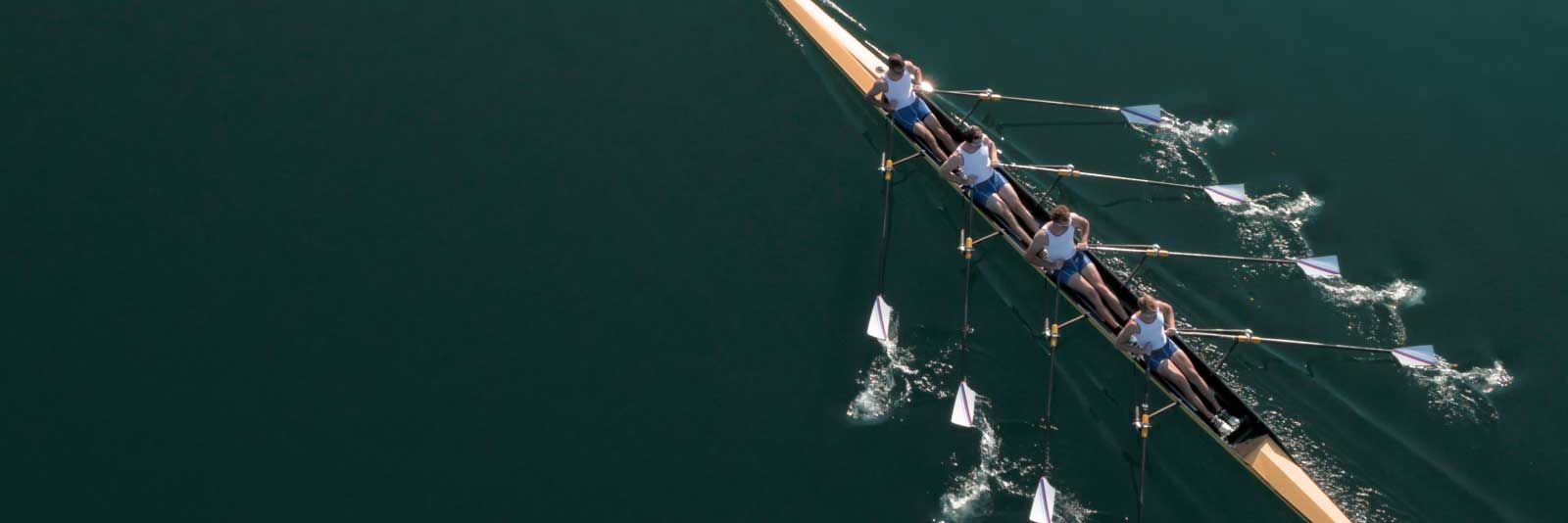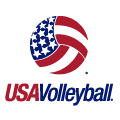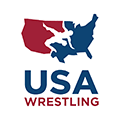How to Get Recruited for Men’s College Rowing

When it comes to determining what men’s college rowing coaches look for in recruits, there are several different factors to consider, which we will cover in this section.
2k erg times are usually the top thing that’s discussed, for several different reasons. 2k erg times are an accurate and dependable way to gauge ability and upside. No, erg times don’t always fully transfer to boat speed on the water when a rower has poor technique, but technique can be worked on and improved. To look at it another way: the top performer at the annual NFL combine won’t necessarily be the best NFL rookie. But coaches always want the best combine performer because there is a very good chance that he will be a good player. That’s why as a recruit, your rowing 2k times will be the top thing that college coaches look at.
The role of your high school team or club can be important in the college recruiting process, but usually only if you’ve rowed for an established team. College coaches do take note of rowing experience and coach recommendations, especially if it’s from a top club like Oakland Strokes or Marin Rowing Association. This also applies to international recruits rowing for well-known teams. But some coaches may be more interested in rostering novices with raw athletic ability that weren’t taught a particular style of technique—this allows them to start with athletes that are a blank slate and will fit well in their current boats and culture. Regarding rowing teams that aren’t as well-known, a rower’s medals or regatta victories may not matter much to a college coach if the coach is not familiar with the level of competition in the region.
As for the role of video in rowing recruiting, it isn’t as important as it is in sports like baseball or softball. It’s difficult for college coaches to get a complete assessment of technique from video, especially in bigger boats. However, recruits can still utilize video if they want to go the extra mile.
Finally, academics are very important for college coaches. Many varsity college rowing teams are found at schools that have high academic standards. College coaches have to find recruits that fit their team’s athletic standards but also can get accepted into the college. Use this section to learn more about how to get recruited for men’s college rowing.
Quick Links
How does college rowing recruiting work?
College men’s rowing is not an NCAA sport. Instead, the majority of varsity programs row in the Intercollegiate Rowing Association (IRA) and club programs row in the American Collegiate Rowing Association (ACRA). For the most part, club programs only recruit on their own campus and through a summer rowing camp, if they host one. On the other hand, IRA varsity programs follow most current NCAA rules. If you plan to pursue varsity college rowing, you’ll have to stick to these recruiting rules.
What do college coaches look for in men’s rowing recruits?
When it comes to rowing recruits, coaches generally look at the following things in order of importance (give or take a slot):
- 2k erg times
- Academics
- Club or high school experience
- Size
- Technique
2k erg times are a dependable gauge of rowing potential and speed on the water, so rowing times are the first thing that college coaches usually review.
College coaches absolutely look for athletes with strong grades and test scores. A large portion of men’s rowing teams are located at colleges with high academic standards, often at private institutions near the East Coast. At some colleges, the coach won’t be able to do anything for a rowing recruit if he doesn’t meet the academic standards of the admissions office.
Athletes who rowed for an established high school or club team will likely work in conjunction with their high school or club coach to share a recommendation with college coaches. These athletes generally have a leg up in the rowing recruiting process because college coaches can expect a certain level of skill from them. However, rowing in college with no experience is still possible for athletic walk-ons.
As far as size goes, college coaches are always on the lookout for tall recruits because they see them as having more upside, as height allows rowers to have more length and leverage in their stroke. Weight is important for generating power, but rowers that are too heavy may slow a boat down.
It’s difficult for college coaches to get a complete assessment of technique from video, especially in bigger boats. Usually, coaches want to see rowers up close, preferably in smaller boats like fours, pairs or singles. For recruits that attend a college rowing camp where they will get seen firsthand, this could be more of a selling point, but many recruits will depend on the other categories to show their abilities.
Men’s heavyweight rowing recruiting 2k times
2k Erg Times for Men’s Rowing (Heavyweight)
| Tiers | 2k Erg Time |
| Tier 1 | 6:10s and under |
| Tier 2 | 6:10s to mid 6:20s |
| Tier 3 | mid 6:20s to 6:40 |
| Tier 4 | 6:30s to 6:40s |
2k recruiting times have improved a good amount over the last 10 years as the sport continues to grow and become more competitive. Another thing to note is that 2k recruiting standards are not the standards for top rowers on a college team. Rowers will improve their times after getting recruited once they acclimate to the college training schedule and workload. Additionally, international recruits are generally held to higher 2k standards than domestic recruits. As previously mentioned, 2k erg time is what coaches look at the most in regard to recruits, followed by academics. Coaches want to see that rowers have the physical tools to succeed as a rower and the grades to succeed as a student at the college. However, there are still several other factors that coaches consider, including experience, height, weight and character. The key for men’s college rowing recruits is to find the right college fit athletically, academically, financially and socially. These recruiting guidelines for athletic standards should not be the only thing recruits consider on their college recruiting journey.
- Tier 1: Elite varsity programs with potential to reach IRA National Championship Regatta finals in the V8+.
- Includes: California-Berkeley, Washington, Yale, Harvard, Princeton, etc.
- Tier 2: Strong varsity programs that consistently qualify for the IRA National Championship Regatta in the V8+.
- Includes: Wisconsin, Navy, Syracuse, Penn, etc.
- Tier 3: Competitive varsity programs with potential to qualify for the IRA National Championship Regatta or reach the Dad Vail Regatta finals in the V8+. Also may include elite club programs during strong years.
- Includes: Colgate, Drexel, Hobart, Temple, etc.
- Tier 4: Varsity programs and top club programs.
- Includes: Jacksonville, UCSB, Michigan, Trinity, etc.
Men’s lightweight rowing recruiting 2k times
2k Erg Times for Men’s Rowing (Lightweight)
| Tiers | 2k Erg Time |
| Tier 1 | 6:30s and under |
| Tier 2 | 6:40s and under |
According to cMax rankings (under Lwt tab) there were only 12 men’s lightweight teams competing during the 2023 spring racing season. Lightweight men cannot weigh more than 160 pounds, and the average weight in the entire boat cannot exceed 155 pounds, which can make it difficult to find athletes to fill boats for college teams. The top teams in college lightweight rowing are very competitive but on the lower end, college teams may find it difficult to maintain a men’s lightweight 8+ consistently from year to year. Here’s how NCSA breaks down the above tiers:
- Tier 1: Elite varsity lightweight programs with potential to qualify for the IRA National Championship Regatta in the 8+.
- Includes: Cornell, Columbia, Princeton, Yale, etc.
- Tier 2: Programs that put together a lightweight 8+ on a regular basis.
- Includes: MIT, California, Temple, etc.
Rowing scholarship erg times
There is no hard erg time number that will score you an athletic scholarship. The bottom end for earning an athletic scholarship at the college level is likely in the 6:40s, but even this depends on a variety of factors. A recruit’s 2k erg time, academics, character and experience are all considered, but there are no athletic scholarships awarded by NCAA Division 3 or Ivy league (Division 1) colleges—though these colleges do help athletes secure other types of aid. So, a recruit with a 6:21 2k time rowing for Yale would receive $0 in athletic scholarship money. That’s why it’s important to start your recruiting process early, research a target list of colleges and keep an open mind about which college can offer the best athletic, academic and financial fit.
Recruiting video for men’s college rowing
Rowing recruiting videos aren’t as important as they are in other sports. American rowing focuses on racing the 8+ and it can be difficult to get a complete assessment of technique from a video with seven other rowers in the boat—though video does help more for evaluating single sculls or a pair. Most recruits rely on their 2k erg score, academics, experience and coach recommendations to get recruiting attention.
With that said, a rowing recruiting video can still be somewhat helpful for a recruit that has good technique and is looking to stand out from the pack—just realize it isn’t the top thing college coaches look at. You’ll want to first talk to your coach and ask him if you can get footage from the launch so that you can share it with college coaches. You’ll then want to upload it online so you can easily share a link with coaches.
















